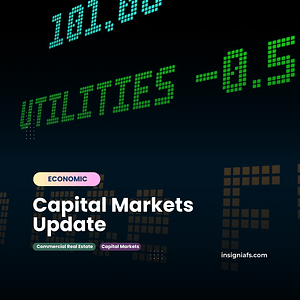The year that just ended was dominated by a new variant of COVID-19, and the surge in the Omicron strain meant a delay to return to office plans, dampened consumer activity and fed global supply chain woes, writes Kevin Thorpe, Cushman & Wakefield chief economist. “However, just weeks into 2022, we have reasons to be cautiously optimistic, which bodes well for the property markets.”
In several global markets, “Omicron has entered a seemingly sustained pattern of plateau and decline,” Thorpe writes. “With many calling for COVID-19 to be treated as endemic, we’re optimistic that the disruption we’ve seen in markets across the world will further abate in 2022.”
Accordingly, Thorpe identifies 10 key areas that merit watching closely as occupiers and investors consider their evolving real estate strategies. They include the following:
1. The pandemic. “Rising vaccination and booster rates, combined with a more transmissible and less severe strain, may allow the pandemic to shift toward endemic in 2022, mitigating economic disruption.“
2. Global supply chain. “Supply chain pressures will ease as the pandemic recedes. Look for ports to utilize slower post-holiday months to catch up on backlogs.”
3. Inflation inflection. “Although current CPI inflation is running hot, current high rates are not expected to persist into the medium-term, limiting pressure on long-term rates.”
4. GDP growth. “Much of the strong economic growth being projected assumes the consumer is ready to unleash pent-up demand that has been accumulating throughout the pandemic. As confidence grows, look for global real GDP to grow in the 4-5% range in 2022.”
5. Industrial supply. “Industrial demand boom to continue and construction deliveries to surge in 2022 bringing more balance to the marketplace.“
6. Multifamily household formation. “Home prices and rents exist in equilibrium. Watch for home price growth to slow down generally (it’s already begun) while rent growth persists and accelerates in lagging markets.”
7. Investor diversification. “Investors should be on the watch for a partial normalization of market activity, becoming more apparent in the second half of 2022 and accelerating into 2023.”
8. Sustainability shifting to the forefront. “’Stranded assets’–we will start to see buildings that do not meet ESG requirements of investors or occupiers. The cost to retrofit some buildings will be too high to deliver value.”
9. Confidence in the office market. “Occupiers to lock in favorable terms for the long-term before office fundamentals recover—i.e., rental rates increase, and concessions decrease.”
10. Retail rebounding. “Although the initial impact of stimulus is behind us, households accumulated savings during the last two years to further support retail growth in 2022. Stronger wage growth and a favorable job market will bolster a broader recovery across retail property markets as the travel, dining and entertainment sectors spring back to life.”
Source: By: Paul Bubny



